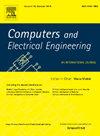Blockchain-enabled 6G wireless network securities using multi-relational graph attention disentangled cascaded graph convolution networks
IF 4.9
3区 计算机科学
Q1 COMPUTER SCIENCE, HARDWARE & ARCHITECTURE
引用次数: 0
Abstract
The emergence of sixth-generation (6 G) wireless networks introduces transformative capabilities such as ultra-low latency, massive device connectivity, and real-time intelligent services. However, the inherently distributed and heterogeneous architecture of 6 G significantly escalates vulnerabilities to cyber threats, unauthorized access, and data breaches across large-scale decentralized infrastructures. Existing security mechanisms are inadequate in modeling complex multi-relational interactions among network entities and often fail to ensure trust, transparency, and tamper-resistance at scale. To address these challenges, this research proposes a novel Blockchain-Enabled 6 G Wireless Network Security framework integrating Multi-Relational Graph Attention and Disentangled Cascaded Graph Convolution Network (Multi-RACG) model. This hybrid graph-based model captures high-order relational dependencies while disentangling semantic features across graph channels to enable precise, context-aware intrusion detection. A Dandelion Optimization Algorithm (DOA) is employed to fine-tune model parameters and optimize network architecture, ensuring rapid convergence and reduced computational overhead. Additionally, a Proof-of-Work-Based Weighted Mining (PoWBWM) consensus protocol strengthens blockchain operations by incorporating dynamic trust metrics, enhancing data integrity and resilience against malicious manipulation. Experimental results demonstrate the framework's superiority, achieving 99.9 % detection accuracy with minimal false positives and computational loss, positioning it as a highly scalable and intelligent security solution for future 6 G ecosystems.
使用多关系图关注解纠缠级联图卷积网络的支持区块链的6G无线网络安全
第六代(6g)无线网络的出现引入了诸如超低延迟、大规模设备连接和实时智能服务等变革性功能。然而,6g固有的分布式和异构架构大大增加了网络威胁、未经授权访问和大规模分散基础设施数据泄露的漏洞。现有的安全机制不足以对网络实体之间复杂的多关系交互进行建模,并且常常无法确保大规模的信任、透明度和防篡改。为了应对这些挑战,本研究提出了一种新的基于区块链的6g无线网络安全框架,该框架集成了多关系图关注和解纠缠级联图卷积网络(Multi-RACG)模型。这种基于图的混合模型捕获高阶关系依赖,同时在图通道中分解语义特征,从而实现精确的、上下文感知的入侵检测。采用蒲公英优化算法(Dandelion Optimization Algorithm, DOA)对模型参数进行微调,优化网络结构,保证快速收敛和减少计算量。此外,基于工作量证明的加权挖掘(PoWBWM)共识协议通过纳入动态信任指标,增强数据完整性和抵御恶意操纵的弹性,加强了区块链操作。实验结果证明了该框架的优势,以最小的误报和计算损失实现了99.9%的检测精度,将其定位为未来6g生态系统的高度可扩展和智能安全解决方案。
本文章由计算机程序翻译,如有差异,请以英文原文为准。
求助全文
约1分钟内获得全文
求助全文
来源期刊

Computers & Electrical Engineering
工程技术-工程:电子与电气
CiteScore
9.20
自引率
7.00%
发文量
661
审稿时长
47 days
期刊介绍:
The impact of computers has nowhere been more revolutionary than in electrical engineering. The design, analysis, and operation of electrical and electronic systems are now dominated by computers, a transformation that has been motivated by the natural ease of interface between computers and electrical systems, and the promise of spectacular improvements in speed and efficiency.
Published since 1973, Computers & Electrical Engineering provides rapid publication of topical research into the integration of computer technology and computational techniques with electrical and electronic systems. The journal publishes papers featuring novel implementations of computers and computational techniques in areas like signal and image processing, high-performance computing, parallel processing, and communications. Special attention will be paid to papers describing innovative architectures, algorithms, and software tools.
 求助内容:
求助内容: 应助结果提醒方式:
应助结果提醒方式:


